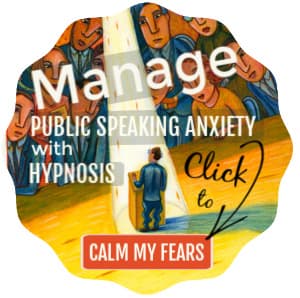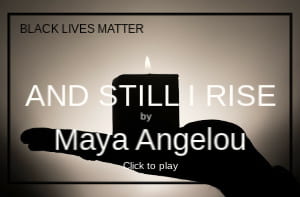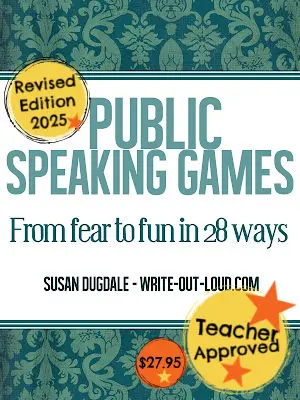- HOME ›
- How to write a speech ›
- How to write a speech for kids
How to write a speech for kids
Create an engaging presentation for children
By: Susan Dugdale | Last modified: 04-28-2021
Writing a speech for kids and then giving it is relatively straightforward. Truly! Once you've gained some experience you'll find it fun, as well as hugely rewarding.
You'll follow exactly the same steps as you would when preparing a speech for adults but with minor, yet crucial variations.
You'll plan, make an outline, write up your notes, prepare cue cards if you need them, rehearse and finally, deliver your speech.
However because you are presenting to children you'll need to adapt some of the processes. Kids are a very different audience!
Use the on-page quick links below to follow my 3 part outline, and you'll be fine.
What's on this page
Part One: Background & audience research
Part Two: Techniques to gain & hold their attention
Part Three: Rehearsal
Whoops, that went down like the proverbial lead balloon: Traps for the unwary
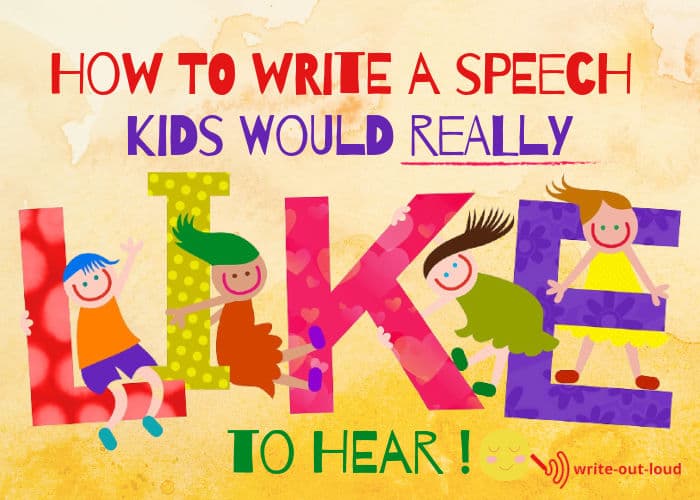
Part 1: Background & audience research
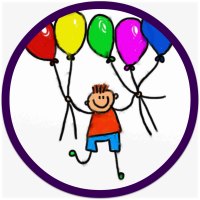
Your first step is to consider your audience. The questions you'll want answers to are:
- What age are these children?
- What backgrounds do they mostly come from?
- What background, if any, do they have in relation to your topic?
- What common experiences do they all share that you could use as stepping stones into your material?
- What level of vocabulary will they readily understand?
- what grabs and keeps their attention?
To get the answers, ask the person or people, who invited you to speak.
Ask also:
- How long you're expected to speak for. This is critical. A child's attention span is not the same as an adults, and there are big differences between a 6 year old and a 16 year old. Find out more: Normal attention span expectations by age
- What the purpose is behind inviting you to speak. Are you being asked to inform, to persuade, to entertain ...?
- If the group has members with special needs you should be aware of like children who are deaf, sight impaired or emotionally fragile
Once you've got that information you're ready to begin shaping your material.
Part 2: How to gain & hold attention
Bear in mind the following as you plan:
- Keep the structure simple and clear: introduction, body of speech, conclusion.
Kids, just like adults, appreciate knowing what is going on and knowing why they're being asked to listen. - Use
conversational language rather than formal. In your mind choose a child
to give your speech to. This will help you keep it 'real'.
- Limit the number of main points you wish to make about your topic to one or two.
- Keep the formal or structured part of your speech brief.
- Allow time for, and encourage questions.
- Relate
the topic back to themselves, their experience, from the beginning. This gives them an anchor, a
place they know and understand as a starting point for the journey you're about to take them on.
Kids love to laugh
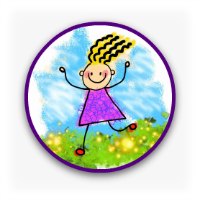
Use humor and personal storytelling to get your message across.
Children of all ages love stories, especially personal ones. A story told well, with humor, will grab their attention faster and hold it longer than any other technique I know. Make it relevant, add characterization, (voices and appropriate body language), and you'll have every child listening.
You can find out more about incorporating stories into your speeches on these pages:
- storytelling - How to choose and tell a story
- storytelling set-ups - How to integrate a story into your speech
- characterization techniques - How to make your stories come alive through gesture and voice.
Vocabulary choices, questions & props
Vocabulary
- Use specific words rather than general ones. 'I love being outdoors' is less evocative than 'I love puddle jumping, building a bonfire at the beach...'
- Use inclusive words: 'we' and 'our' as well as personal ones: 'yours', 'you'
- Vary your sentence length and your word choice to keep it interesting to listen to. Children, like adults, appreciate variation.
Questions, instructions and involvement
Use interactive questions, and instructions, to ensure they're following you throughout your speech. For example: 'Have you got that? Nod your heads if you have.'
Or, 'Wave your hand like this (demonstrate) if you can see the picture I put on the board.'
Get them involved by asking for volunteers to help hand things around.
Play simple chorus answer and action games like, 'When I say, who has got a good thinking brain, you say ME and pat your head. Let's try it now. Ready? Who's got ...'
Or, 'When I get to a scary bit in the story you're going to go ooooooh,oooooh in a very frightened sort of way and make yourselves very small like this.' (Demonstrate.) 'Now, let's try it together...That's fantastic. I've never seen a better bunch of scared kids.'
Props or visual aids
Where possible incorporate 'showing' as well as 'telling'. Take along things children can see and if at all possible, handle. This gives your speech another dimension. And don't be afraid to break out your silly wig, or a clown's nose ...
Check this page on using props well in speeches.
Once you have the basic outline of your speech planned you're ready for the next step.
Part Three: Rehearsal
Now you're going to trial your work.
Rehearsal will help you identify what you've done well and where you need to fine tune.
If you can, practice in front of several children of the same age and background you're going to talk to.
If they're old enough to understand, ask them before you give the speech, if they can help you make it better and collect their feedback at the end.
If they're not old enough, look for cues like looking away, looking puzzled, talking through it, or wriggling. If it's too long and without relevance or connection to them they'll soon let you know.
Children don't have filters. They'll show and tell you like it is. They're not being deliberately rude. It's actually quite simple. They're not interested and haven't learned to pretend otherwise, yet. Don't make the mistake of taking their responses personally!
Before you go on to finalize your speech incorporate your changes.
If you'd like pointers on how to rehearse you'll find them here:
Do
try and give your speech without a word-for-word script. It might feel
safer for you but for children, listening to you read is not as
effective as you talking to, or interacting with them, directly.
Use cue cards if you can. Rehearse until you know it fluently and the cue cards are merely a safety net should you need them.
And finally run through the checklist below.
These are the pitfalls I've either fallen into myself or watched others tumble down. Knowing will help you avoid them.
Whoops - traps for the unwary
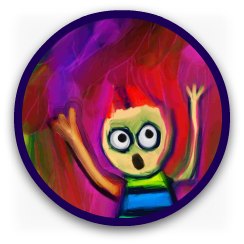
Learning the hard way; when it doesn't go like you imagined it would and a great dark chasm opens beneath your feet and you find yourself rapidly disappearing down it, silly wig and all.
It's ghastly, and an experience I've had more than several times in my teaching career.
Here's what I've learned. Blaming your audience is letting yourself off the hook! When a presentation lurches sideways it's not the children's fault. The hell hole is generally of our own making. Any of these factors could have caused it:
- assuming that because a child is a child and you're an adult you automatically know more than they do
- patronizing your audience through using either over-simplified or baby language
- talking over their heads by using either non-explained jargon or a vocabulary beyond their experience
- not
rehearsing and then finding that your speech doesn't flow logically. Or it's too long. Or that it doesn't have enough relevance so the kids are bored. Or the props you brought don't work as you wished. They're too small to be seen from the stage. And the stories you
planned fall flat.
- introducing inappropriate subject matter for the group or an individual in the group. Always check.
- trying to fit too much information into the time allotted.
- inadvertently making fun of a child's comments and concerns therefore shaming them in front of their peers.
- exploiting
their trust and naivety by presenting material persuasively that is
ultimately of no benefit to them and at worst destructive.
- getting
flustered by bit of very ordinary spontaneous child behavior (talking while you are
talking, wriggling ...) and not knowing how to handle it and move on
with ease
- not having established the rules of engagement at the beginning for asking questions, handling props, or any activity involving interaction ...
There is a common sense remedy for all of them. Trial your speech in rehearsal! And if it helps get a trusted and experienced colleague in to give you feedback!
- Return to top of how to write a speech for kids

